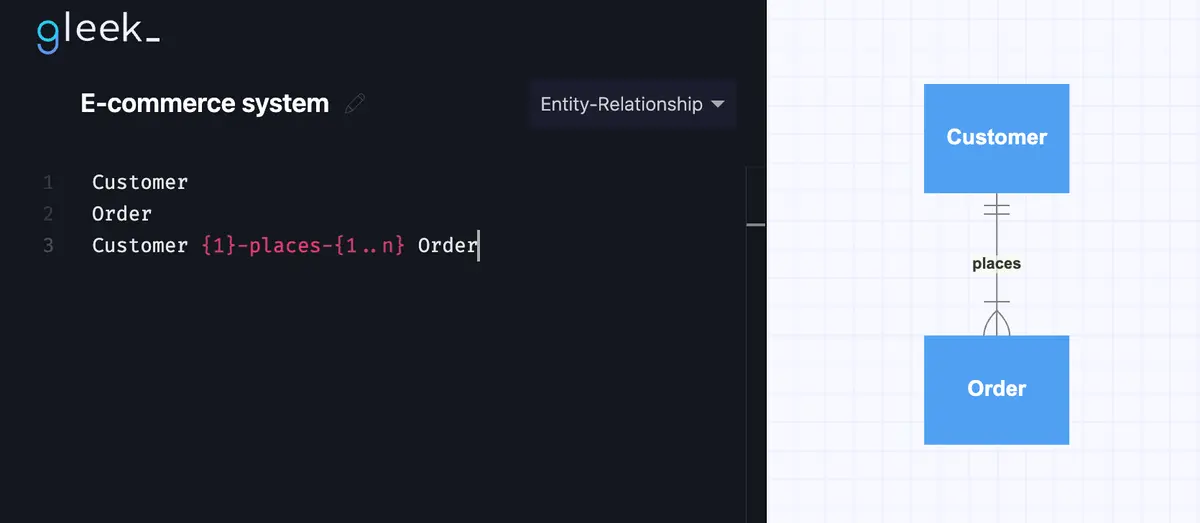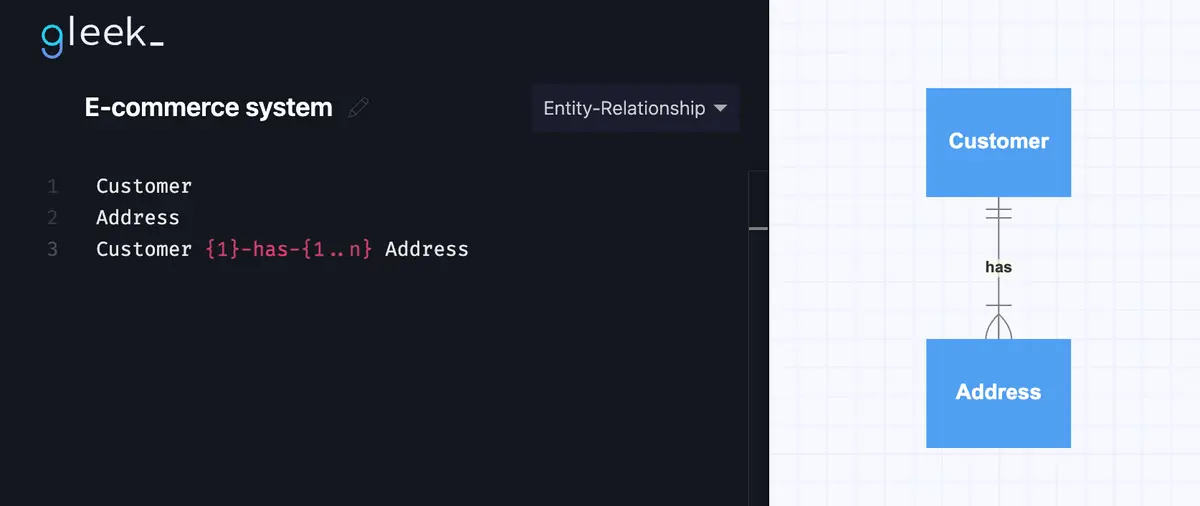Understanding the intricacies of data entity relationships is essential in domain management. The one-to-many relationship is particularly notable for its extensive applicability and role in structuring databases to reflect real-world dynamics accurately.
Introduction to One-to-Many Relationships
This relationship involves a single record in one table linking to multiple records in another, a fundamental aspect of relational database design that captures complex real-life associations digitally.
Consider an e-commerce platform as an example, where one customer (a "Customers" table record) may place several orders ("Orders" table records), illustrating the typical one-to-many relationship. Such relationships are central for organizing data with efficiency and intuition, supporting a broad spectrum of real-world connections across various domains. These relationships act as the foundational framework of database architecture, enabling organized, logical, and scalable data management.
Explore more on What is Data Modeling in our article.
Grasping these relationships establishes the foundation for excelling in database design and management, leading to the creation of databases that are robust, efficient, and capable of accurately managing the complexities of real-world data.
The Basics of Implementing One-to-Many Relationships
Implementing one-to-many relationships in a relational database is a foundational task that requires understanding both theoretical concepts and practical applications. Below, we outline the basic steps and considerations involved in establishing these relationships effectively.
Define Primary and Foreign Keys
The first step towards implementing a one-to-many relationship is identifying or creating primary and foreign keys. A primary key is a unique identifier for each record within a table, ensuring that each entry remains distinct. On the other side, a foreign key in another table references this primary key, establishing a link between the two tables. Surrogate keys, if employed, can provide additional flexibility and efficiency in managing relationships within the database. For instance, in an e-commerce database, each customer might have a unique customer ID (primary key or surrogate key), which is referenced by multiple order entries (foreign keys) in the orders table.
Find out about Many-to-many relationships in databases.
Design Table Structure Thoughtfully
Thoughtful table design is critical in efficiently implementing one-to-many relationships. It involves determining which data belongs to the "one" side and which fits into the "many" side of the relationship. Proper normalization—a process of organizing data to reduce redundancy and improve data integrity—plays a crucial role here. It helps in segregating data into logical tables that can be linked through one-to-many relationships.
Utilize Database Management Systems Features
Most modern Database Management Systems (DBMSs) offer built-in features to define and enforce one-to-many relationships. These include constraints like FOREIGN KEY, which ensure that the foreign key values in the 'many' table always have corresponding primary key values in the 'one' table. Taking full advantage of these features can automate much of the heavy lifting involved in maintaining data integrity across related tables.
Make your own ER diagram in Gleek.
Ensure Data Integrity
Maintaining data integrity is of top importance in any database system. In the context of one-to-many relationships, this means ensuring that every foreign key reference is valid and corresponds to an existing primary key value. Techniques like cascading updates and deletes can be implemented to ensure that changes in the primary key table (the 'one' side) are correctly reflected in the related table (the 'many' side).
Test Thoroughly
Thorough testing is the final but ongoing step in implementing one-to-many relationships. This involves verifying that the database accurately represents the desired real-world associations and behaves as expected under various scenarios. Testing ensures not only the functionality of the database design but also its performance and scalability.
By following these basics, developers and database administrators can create strong databases that accurately model complex relationships and support efficient data retrieval and manipulation.
Challenges and Best Practices in One-to-Many Relationships
Implementing one-to-many relationships in databases, while foundational, comes with its set of challenges. These can range from design complexities to performance issues. However, by adhering to best practices, you can mitigate these challenges and ensure your database is both efficient and scalable. Here's a closer look at the common hurdles and how to overcome them.
Check on other relationships in our Multiplicity in ER diagrams blog post.
Challenges in One-to-Many Relationships
Data Redundancy: Without careful design, one-to-many relationships can lead to redundant data across tables, increasing storage requirements and potentially leading to inconsistencies.
Performance Issues: Large datasets with poorly indexed foreign keys can significantly slow down query performance, especially when retrieving data that spans multiple tables.
Maintaining Data Integrity: Ensuring that all foreign key references are accurate and current can be challenging, particularly with large volumes of data and frequent updates or deletions.
Complex Queries: Crafting SQL queries that effectively leverage one-to-many relationships can become complex, making it difficult to retrieve data efficiently.
Make your own ER diagram in Gleek.
Best Practices for Managing One-to-Many Relationships
Normalize Your Data: Normalization helps minimize redundancy and ensures that each piece of information is stored only once. This practice is crucial in maintaining a clean, efficient database structure that accurately reflects one-to-many relationships.
Index Foreign Keys: Indexing foreign keys can drastically improve query performance by reducing the time it takes to search through the 'many' side of a relationship. This is particularly important for databases with large transaction volumes or extensive datasets.
Implement Cascading Actions: Cascading update and delete actions help maintain data integrity across related tables. For example, deleting a record on the 'one' side can automatically remove all corresponding records on the 'many' side, preventing orphaned entries.
Use Join Statements Effectively: SQL join statements are powerful tools for querying data across multiple related tables. Understanding and using different types of joins (INNER, LEFT, RIGHT, FULL) can help you retrieve exactly what you need efficiently.
Monitor and Optimize Performance: Regularly monitor your database’s performance, especially when dealing with large datasets or complex queries. Optimization may involve tweaking your database schema, re-indexing, or adjusting queries to keep your database running smoothly.
Design With Scalability in Mind: Anticipate future growth and design your database to accommodate it. This means not only considering the volume of data but also the complexity of relationships and queries that might be required as your database grows.
Want to learn about other relationship types? Check out our latest blog on One-to-one relationship.
Real-World Examples of One-to-Many Relationships Visualized
Understanding one-to-many relationships in databases becomes easier when we consider real-world scenarios that can be represented through these relationships. By visualizing these examples in an entity-relationship (ER) diagram with the help of the Gleek app, we can grasp how a single entity can relate to multiple other entities within a database structure.
Learn more about ERD in database design.
Customers and Orders: A classic example of a one-to-many relationship is found in e-commerce platforms where a single customer can place multiple orders over time. In an ER diagram, this would be represented by a 'Customer' entity connected to an 'Order' entity by a line, indicating the one-to-many relationship. Each 'Customer' record, identified by a unique customer ID, can be linked to multiple 'Order' records, each with its own order ID.

Check out our detailed step-by-step guide on how to create ERD for an E-commerce website.
Users and Addresses: Consider a scenario where users of a service can register multiple addresses (home, work, etc.). Here, the 'User' entity has a one-to-many relationship with the 'Address' entity. This relationship allows a single user to associate multiple addresses under their profile, effectively mapping the real-world scenario into the database design.

Books and Chapters: In the publishing world, a book is composed of many chapters. This relationship is captured in databases by linking a single 'Book' entity to multiple 'Chapter' entities. The 'Book' acts as the singular side of the relationship, while each chapter represents the many side, allowing for an organized structure that reflects the physical layout of a book.

Teachers and Students: In an educational context, a teacher may instruct multiple students in a particular subject. An ER diagram could represent this with a 'Teacher' entity linked to a 'Student' entity, denoting that while there is only one teacher for a subject, there could be many students learning from them.
Make your own ER diagram in Gleek.

Final Insights into One-to-Many Relationships
In conclusion, the exploration of one-to-many relationships in databases underscores their critical role in modeling complex real-world interactions within digital frameworks. These relationships, essential across diverse domains, enhance database efficiency and integrity by ensuring data is structured logically and cohesively.
Accurate modeling of these relationships demands technical expertise, with a focus on clarity, precision, and functionality. It highlights the necessity for professionals to employ rigorous methodologies in diagram creation and relationship representation, ensuring databases are both solid and adaptable.
The Gleek app significantly enhances the visualization of one-to-many relationships in databases through its focus on efficiency, clarity, and precision. Leveraging keyboard shortcuts for swift diagram creation, Gleek allows for the technical and concise depiction of complex relationships. This tool embodies functionality and expertise in diagramming, offering a streamlined approach to accurately represent one-to-many connections, essential for professionals prioritizing high-quality database design.
Related posts
All about ER model cardinality with examples
Derived Attributes in ER diagrams: A comprehensive exploration
ER diagram for an E-commerce website with Gleek's AI chat
Primary keys vs. unique keys: Fundamental differences
What is an associative entity in an ERD?
Relational schema vs. ER diagrams: A detailed comparison
Guide to entity-relationship diagram notations & symbols
What is the entity-relationship diagram in database design?
Composite and other attributes in the entity-relationship model
